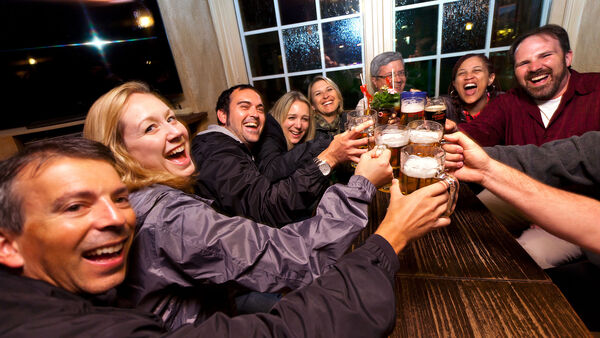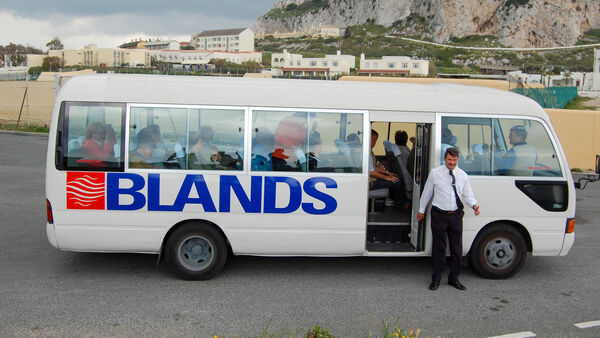Tips for Comparing European Bus Tours


By Rick Steves
Taking a bus tour can be a good choice if your European vacation time is limited. Offerings range from luxury we-handle-everything bus tours for smaller groups to comfortable midrange tours (like mine, which are also for smaller groups) to low-end, pack-'em-in, big-bus operators for large groups. In nearly all cases, a bus tour includes a professional and multilingual guide, a comfy bus, decent hotels with mass-produced comfort, and some meals. The cheapest tours can cost around $150 a day.
Here's my advice for choosing a bus tour and getting the most value for your money.
Consider Your Options
Would you rather travel with a group of 48 or 16? Change hotels every night or enjoy two-night stays? There are plenty of variables to consider when comparing the fully guided tours offered by travel companies.
There are hundreds of tours to choose from, covering a wide price range. The big names are dependable. Abercrombie & Kent and Tauck are high-end expensive. Cosmos and Globus are solid budget options. In between are Insight, Trafalgar, GAdventures, Collette — and my own tour company, Rick Steves' Europe. High-end tours typically cost $400 to $1,050 per day, include most meals and sightseeing, and host smaller groups. Low-end tours cost $150 to $250 per day, include fewer meals, charge extra for some sightseeing, and host larger groups. My Rick Steves tours fall somewhere in the middle, averaging $300 to $425 per day with all sightseeing and half of all meals included. Remember, airfare is typically not included in tour companies' advertised prices.
No matter which tour company you go with, it's important to do your research. Start by browsing your options online, asking friends, reading customer feedback, or talking to a travel agent for advice. The tour company may be very big, booking rooms by the thousands; it may even own the hotels it uses. While these hotels fit American standards — large, not too personal, with double rooms and good plumbing — they're often on the outskirts of town. Keep in mind that the goal of most tour companies is to fill every seat on that bus. On the biggest tours, groups are treated as an entity: a mob to be fed, shown around, profited from, and moved out. If money is saved, it can be at the cost of real experience.
When considering tours, remember that some of the bestsellers are those that promise more sightseeing than is reasonable in a given amount of time. No tour can give you more than 24 hours in a day or seven days in a week. What a wide-ranging "blitz" tour can do is give you more hours on the bus. Choose carefully among the itineraries available. Do you really want a series of one-night stands? Bus drivers call tours with ridiculous itineraries "pajama tours." You're in the bus from 8 a.m. until after dark, so why even get dressed?
The cheapest bus tours are impossibly cheap. There's literally no profit in their retail price. They can give you bus transportation and hotels for about what the tourist-off-the-street would pay for just the hotels alone. But there's a catch: These tours tend to charge extra for sightseeing and make money by taking you to attractions and shops from which they receive kickbacks. However, savvy travelers on a tight budget can take advantage by thinking of them as a tailored bus pass with hotels included. Skip out on the shopping, don't buy any of the optional tours, equip yourself with a guidebook, and do your own sightseeing every day. Just apply the skills of independent travel to the efficient, economical trip shell that these kinds of organized coach tours provide.
Having learned long ago what doesn't work when it comes to bus tours, I've made it a priority to give people taking my Rick Steves tours the best possible experience at a midrange price. I keep my groups small (24–28 travelers), stay at least two nights in most locations (at centrally located hotels), and visit the important sights while also seeking out authentic cultural experiences. I offer a variety of itineraries (Europe-wide, regional, and city tours) and a variety of tour styles: fully guided tours, family-oriented tours, winter tours, and My Way vacations, which let you set the sightseeing itinerary while we provide the transportation, the hotels, and a tour manager).
Go with a smaller group. A small group can sightsee, dine, and sleep at places that mainstream groups can only dream of. The bigger the group, the more you're cut off from Europe's charms. When 50 tourists drop into a "cozy" pub, any coziness is trampled.
Avoid one-night stands. Frequent one-night stops can really wear you out. To help you feel settled for a good night's rest, the best tours let you sleep for at least two nights in the same hotel whenever possible.
Ask where your hotels are located. Hotels set in the historic heart of a city, within walking distance of major sights, make for a far more memorable trip — but some tour companies save money by parking guests in the middle of nowhere. If the tour brochure says you'll be sleeping in the "Florence area," that could be halfway to Bologna — and you'll spend half your sightseeing time on transportation to and from the city center. Arrivederci, Firenze. Get explicit locations before you decide.
Look for authentic eating experiences. Pick a tour that offers a generous taste of the best local dishes. A common complaint among travelers is that tour meals don't match the country's cuisine. Avoid a tour that offers too many forgettable buffets in big, impersonal hotel restaurants. I also like tours that don't cover too many meals, as that gives you the freedom to explore restaurants on your own.
Find out about the guide. The quality of your guide can make or break your travel experience. Ask if your tour guide is salaried, or paid through tips and/or commission. Guides from most tour companies make the bulk of their income from tips and merchant kickbacks. A salaried guide can focus on creating memorable travel experiences for you — not on selling you an optional sightseeing or shopping excursion.
Take a close look at what's included — and what's not. Many budget tours expect you to shell out additional cash during your trip to cover "optional" sightseeing, charging $50 or $100 extra for each excursion.
Confirm which sights you'll see. Do you at least recognize them? Don't assume that every famous museum or castle will be included in your itinerary. Some companies choose sights for their convenience rather than merit. For instance, the Lion Monument in Luzern, Switzerland, is mediocre. What makes it "great" for tour companies is its easy tour-bus parking. Meanwhile, Leonardo da Vinci's Last Supper in Milan may be passed over because it's expensive to visit and its mandatory reservation system is inconvenient. If the tour doesn't cover your must-see sight, you may be able to get there on your own, if there's enough free time built in.
Understand the itinerary. On a tour of multiple cities or countries, you're likely to spend valuable time getting between destinations, either by bus, train — or more recently, plane. A bare-bones tour may spend six hours getting between destinations by bus, while a higher-end outfit takes advantage of high-speed train. A smart itinerary will limit time spent in transit, and break up unavoidably long travel days by hitting worthwhile stops along the way.
Ask if the tour price is locked in once you make your deposit. Some tour outfits reserve the right to increase the price after you've signed up (depending on how many travelers sign up and/or currency fluctuations). Choose a company that guarantees the price will not change.
Read the fine print. What are the company's policies regarding cancellations, transfers, and refunds?

